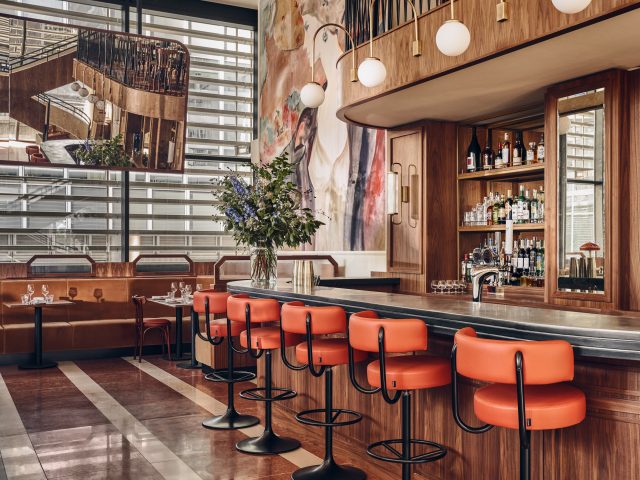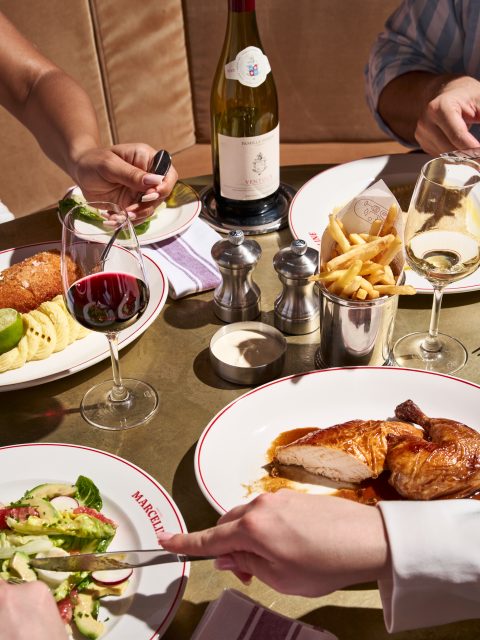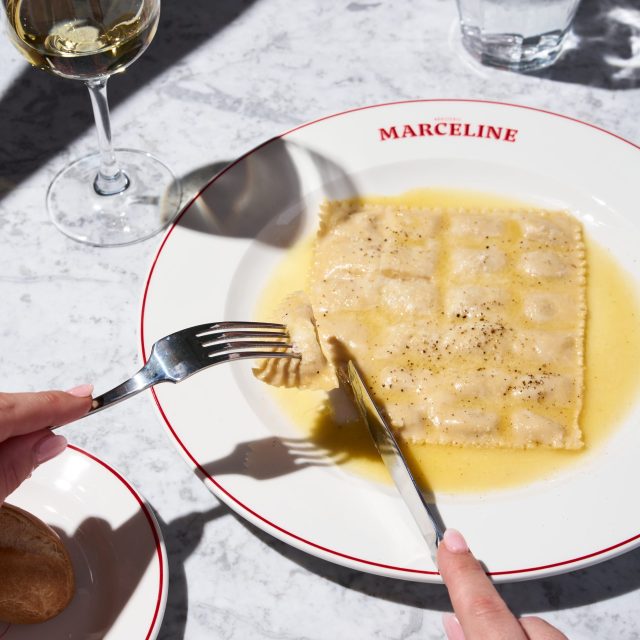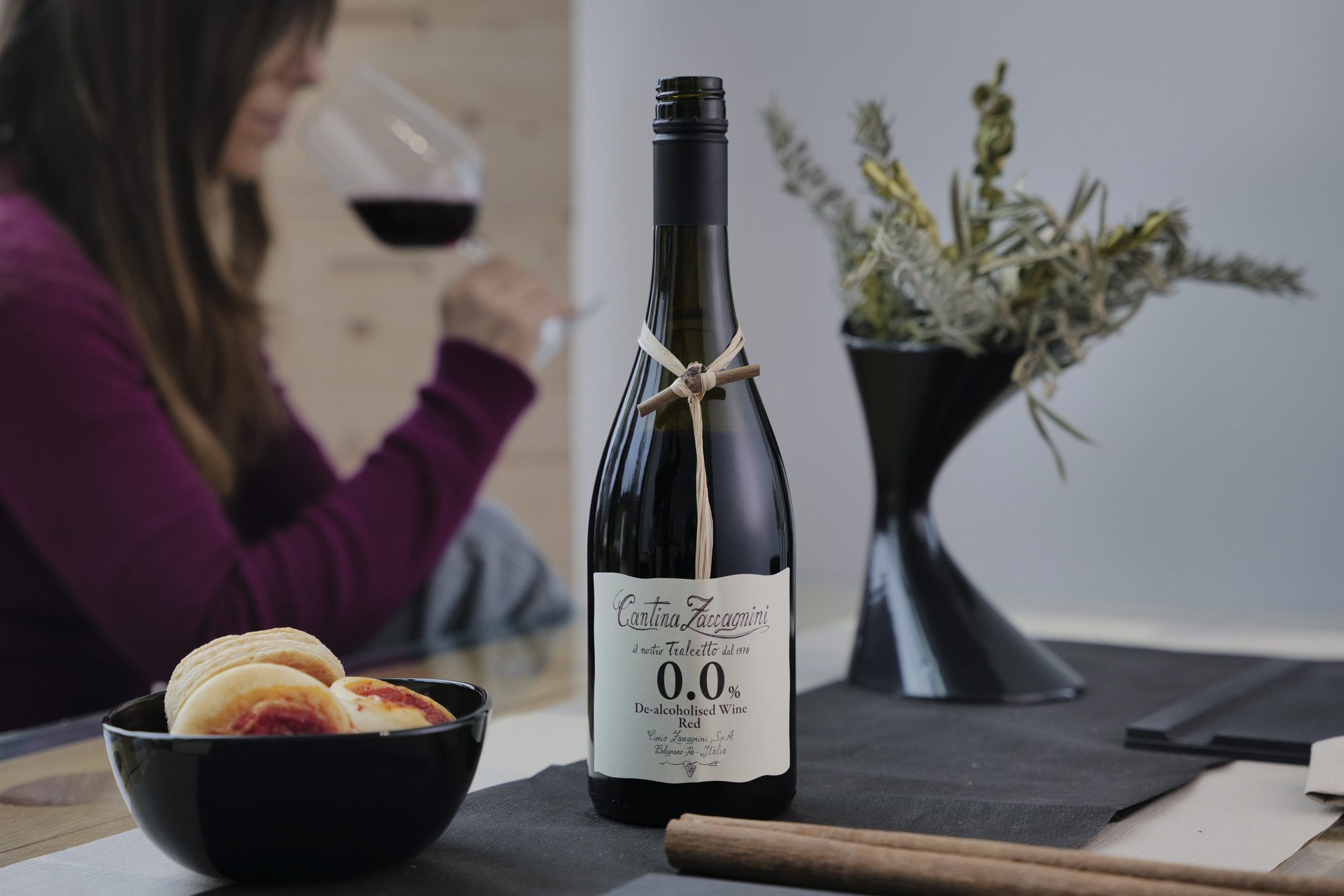What to drink at Marceline
Opened to the public this week, Marceline is a Parisian-inspired brasserie in the heart of Canary Wharf. Louis Thomas finds out more about how head of wine Jeffrey Koren has created a list based on the principle of “classics with a twist”.

The kitchen of the new opening on Canary Wharf’s Wood Wharf is helmed by Le Gavroche veteran Robert Aikens, while Koren, formerly of The Latymer and Maaemo, Norway’s only three-Michelin-starred restaurant, has curated the list.
“A wine list needs to be created in harmony with the food menu. Those who are familiar with traditional brasserie fare will find that we’ve not pushed the boat out too much on our interpretations of some time-tested classic dishes,” he explained. “There’s something comforting and familiar about most of the food, and I wanted there to be something comforting and familiar about most of the wine too.”
“But where we can add our ‘twist’ is by featuring wines with more unknown grapes, or wines sourced from regions you might not expect,” Koren added. “For example, I love the expansive and ‘oily’ texture of Alsatian-style Pinot Gris. But on our list, perhaps the most quintessential example of Alsatian-style Pinot Gris, if I can call it that, is made by Aleks Simčič and his two sons in Goriška Brda, Slovenia – just a stone’s throw from the Italian border [£90 a bottle].”
Indeed, Marceline’s list seems to have plenty of entries from left field, including Koren’s decision to go against the Albariño boom that has gripped the UK on-trade: “Portuguese winemaker Anselmo Mendes, known as Mr Alvarinho, is a master of the Alvarinho/Albariño grape. So the sensible thing to do would be to list one of his Alvarinhos. Instead, we went with his Loureiro [£49 a bottle].”
“In the wrong hands, Loureiro can feel overly broad and juicy and aromatic. But Mendes’ expression of the grape offers up gorgeous salinity, zingy fresh fruit aromatics, and the sort of mineral character and precision you might not expect from a reasonably-priced Vinho Verde,” he explained. “It’s a stellar find from Lance Foyster MW of Clark Foyster Wines, and I think it goes down an absolute treat with a big platter of oysters.”
 x
x
Burgundy on a budget
Going for the unconventional also extends to the more classic regions featured on the list.
While Burgundy may seem out of reach for all but the most deep-pocketed of consumers, Koren has sought out expressions at the more “affordable” end of the spectrum.
“The first step to finding white Burgundy that won’t break the bank is a willingness to look outside the Côte-d’Or, and to source wines from places that are off the beaten track. Our Bourgogne Blanc Chitry from Domaine Giraudon [£55 for a bottle] comes from ‘Chablis-esque’ Kimmeridgian limestone soils, just 12 kilometres south west of Chablis. It’s fresh, elegant, and available at a sensible price. I’ve had premier cru Chablis for twice the price which isn’t as good.”
Partner Content
“And now that the top sites in Pouilly-Fuissé have finally been granted premier cru status, I’m hopeful that more and more wines from southern Burgundy’s Mâconnais region will receive the recognition that they deserve,” he shared.
Left off
As for if there are any controversial inclusions on the list, Koren said the more divisive issue would be what Marceline doesn’t have: “When it comes to Champagne, there are no Grandes Marques on our list. That’s not because of a dogmatic opposition to the Grandes Marques’ wines. In many cases, I love them. But I feel that everything we’re trying to do with our small but carefully curated Champagne selection can be fulfilled by one of the growers we showcase.”
“Canary Wharf is marked by the presence of large multinationals, and chain restaurants. And I think a Champagne list composed solely of growers definitely fits the ‘vibe’ of our independent restaurant,” he shared. “That could all change; I want to reiterate that the Champagne list isn’t written with a dogmatic mission to exclude Champagne’s most recognised names. I just feel that the producers we have chosen to include are all fully deserving of time in the limelight.”
“Realistically, we’d be a drop in the ocean for a company like LVMH. But for a family Champagne producer like Guy de Forez, who owns just 11 hectares of vines, we can make a real difference,” he added.

Home comforts
Koren is certainly eager to promote English wines, with Ridgeview Bloomsbury Brut [£14 for a 125ml glass] as one of Marceline’s flagship fizzes. Explaining why he chose to push these home-grown tipples, Koren said: “My last role in the on-trade was in Oslo. Norway is one of the most important export markets for English Sparkling wine, and it took me leaving the UK to realise just how truly special some of the wines are.”
Ridgeview isn’t the only British producer on the list – Koren has also included other, lesser-known wines from this sceptred isle: “Given our location in East London, I’d be remiss not to list the crown jewel of the ‘Côte d’Essex’: Danbury Ridge. With both the Chardonnay [£115 a bottle] and the Pinot Noir [£127 a bottle], Northern Irish winemaker Liam Idzikowski is making some truly excellent wines. Not just ‘excellent for England’, but excellent full stop. We also list the Pinot Noir Précoce from Ben Witchell’s Flint Vineyard project [£96 a bottle], based in Norfolk. The wine sees some semi-carbonic maceration, and I’m a sucker for cru Beaujolais. Indeed, there’s a touch of Juliénas about it. Served chilled, the Précoce is a perfect wine to enjoy on our west-facing terrace on a sunlit evening.”
By-the-glass
Koren revealed that there are more than “two dozen” wines available by-the-glass, including Domaine Thevenard’s Mâcon-Lugny Les Genièvres (best served with rotisserie chicken) [£16 for a 125ml glass], and a Moscato d’Asti from Alessio and Romina Tacchino [£8 for a 100ml glass] which he suggests pairing with Marceline’s Mille-Feuille.
“The one thing you won’t find too much of is bottlings of big, overblown, over extracted reds. Rants about the ‘Parkerisation’ of wine have been done to death, and I won’t get into that, but I ultimately don’t want to overpower the food; I want to complement it. Luckily, those super-extracted wines have largely fallen out of fashion,” he suggested.
Also available by the glass [£10 for a 100ml glass] is El Maestro Sierra Pedro Ximénez, which is the liquid component of Koren’s favourite pairing from the menu: “I’m not normally big on either chocolate or Pedro Ximénez. So it’s slightly surprising that my favourite combination, thus far, has been our Chocolate dessert with the PX sherry from El Maestro Sierra. There’s this wonderful combination of complexity and balance that’s impossible to resist.”
Related news
'Rare buying opportunities' as fine wine prices hit a five-year floor




